
The Seminole Wars were a series of three military conflicts between the United States and the Seminoles that took place in Florida between about 1816 and 1858. The Seminoles are a Native American nation which coalesced in northern Florida during the early 1700s, when the territory was still a Spanish colonial possession. Tensions grew between the Seminoles and settlers in the newly independent United States in the early 1800s, mainly because enslaved people regularly fled from Georgia into Spanish Florida, prompting slaveowners to conduct slave raids across the border. A series of cross-border skirmishes escalated into the First Seminole War in 1817, when American General Andrew Jackson led an incursion into the territory over Spanish objections. Jackson's forces destroyed several Seminole and Black Seminole towns, as well as the briefly occupied Pensacola before withdrawing in 1818. The U.S. and Spain soon negotiated the transfer of the territory with the Adams-Onis Treaty of 1819.

Alachua is the second-largest city in Alachua County, Florida and the third-largest in North Central Florida. According to the 2020 census, the city's population was 10,574, up from 9,059 at the 2010 census. It is part of the Gainesville, Florida Metropolitan Statistical Area. Alachua has one of the largest bio and life sciences sectors in Florida and is the site for the Santa Fe College Perry Center for Emerging Technologies.

The Second Seminole War, also known as the Florida War, was a conflict from 1835 to 1842 in Florida between the United States and groups of people collectively known as Seminoles, consisting of American Indians and Black Indians. It was part of a series of conflicts called the Seminole Wars. The Second Seminole War, often referred to as the Seminole War, is regarded as "the longest and most costly of the Indian conflicts of the United States". After the Treaty of Payne's Landing in 1832 that called for the Seminole's removal from Florida, tensions rose until fierce hostilities occurred in the Dade battle in 1835. This conflict started the war. The Seminoles and the U.S. forces engaged in mostly small engagements for more than six years. By 1842, only a few hundred native peoples remained in Florida. Although no peace treaty was ever signed, the war was declared over on August 14, 1842.
The Battle of Lake Okeechobee was one of the major battles of the Second Seminole War. It was fought between 800 troops of the 1st, 4th, and 6th Infantry Regiments and 132 Missouri Volunteers, and between 380 and 480 Seminoles led by Billy Bowlegs, Abiaca, and Halpatter Tustenuggee (Alligator) on 25 December 1837. Halpatter Tustenuggee had played a major role in the Dade Battle two years earlier. The Seminole warriors were resisting forced relocation to a reservation in Oklahoma. Though both the Seminoles and Taylor's troops emerged from the battle claiming victory, Taylor was promoted to the rank of brigadier general as a result, and his nickname of "Old Rough and Ready" came mostly due to this battle.

The Powder River Expedition of 1865 also known as the Powder River War or Powder River Invasion, was a large and far-flung military operation of the United States Army against the Lakota Sioux, Cheyenne, and Arapaho Indians in Montana Territory and Dakota Territory. Although soldiers destroyed one Arapaho village and established Fort Connor to protect gold miners on the Bozeman Trail, the expedition is considered a failure because it failed to defeat or intimidate the Indians.
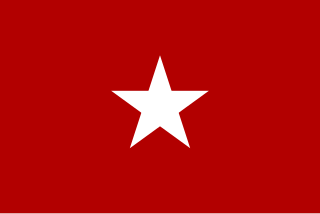
The Army of New Mexico, also known as the Sibley Brigade, was a small Confederate field army in the American Civil War. It operated in Confederate Arizona and New Mexico Territory during the New Mexico Campaign in late 1861 and early 1862, before it was transferred to Louisiana. At first the force was tasked with securing Confederate Arizona's forts, most of which were still in Union hands. John R. Baylor had already established the Confederate Territory of Arizona after the First Battle of Mesilla in 1861. Now the goal was to capture the remaining U.S. held forts in Confederate Arizona and to invade New Mexico Territory. The army also hoped to capture the mines of Colorado and California, to secure gold and silver supplies to finance the Confederate war effort. Ultimately, the Confederate plans were thwarted at the Battle of Glorieta Pass.

The Battle of Wahoo Swamp was an extended military engagement of the Second Seminole War fought in November 1836 in the Wahoo Swamp, approximately 50 miles northeast of Fort Brooke in Tampa and 35 miles south of Fort King in Ocala in modern Sumter County, Florida. General Richard K. Call, the territorial governor of Florida, led a mixed force consisting of Florida militia, Tennessee volunteers, Creek mercenaries, and some troops of the US Army and Marines against Seminole forces led by chiefs Osuchee and Yaholooche.

Duncan Lamont Clinch (April 6, 1787 – December 4, 1849 was an American army officer and slave-plantation owner who served as a commander during the War of 1812, and First and Second Seminole Wars. In 1816, he led an attack on Negro Fort, the first battle of the Seminole Wars. Clinch later served in the United States House of Representatives, representing Georgia.

The Dade battle was an 1835 military defeat for the United States Army. The U.S. was attempting to force the Seminoles to move away from their land in Florida and relocate to Indian Territory. Amidst a war between the Government of the United States and the Seminole two U.S. Army companies numbering 103 men under the command of Major Francis L. Dade were ambushed by approximately 180 Seminole warriors as they marched from Fort Brooke on Tampa Bay to reinforce Fort King in Ocala. Only three U.S. soldiers survived the attack, and one died of his wounds the following day.
The 1st Nevada Cavalry Battalion, or the Nevada Territory Cavalry Volunteers, was a unit raised for the Union army during the American Civil War. It remained in the west, garrisoning frontier posts, protecting emigrant routes, and engaged in scouting duties. The unit was disbanded in July 1866.

Ichabod Bennet Crane was an American career military officer for 48 years and the probable namesake of the protagonist in Washington Irving's The Legend of Sleepy Hollow.

Henry Stanton Burton (1818–1869) was a graduate of West Point, a career American Army officer who served in the Second Seminole War, Mexican–American War and the American Civil War.
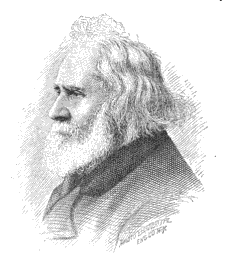
Horace Brooks was an officer in the Regular Army of the United States from 1835 – 1877. After graduating the United States Military Academy at West Point, he served in the Second Seminole War. During the Mexican–American War he was promoted to the rank of captain and brevetted temporarily to the rank of lieutenant colonel. During the American Civil War, he served in command of artillery batteries at various forts and was eventually placed in command of the 4th United States Artillery Regiment with the rank of colonel. At the close of the civil war, he was awarded the honorary grade of brevet brigadier general. He continued his career as a soldier after the Civil War, remaining in command of the 4th U.S. Artillery until his retirement in 1877.
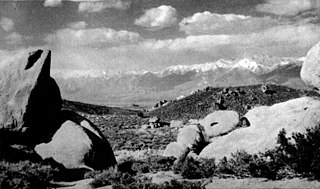
The Owens Valley War was fought between 1862 and 1863 by the United States Army and American settlers against the Mono people and their Shoshone and Kawaiisu allies in the Owens Valley of California and the southwestern Nevada border region. The removal of a large number of the Owens River indigenous Californians to Fort Tejon in 1863 was considered the end of the war. Minor hostilities continued intermittently until 1867.

William Gates was a long serving career United States Army officer who served on active duty from when he entered West Point as a cadet in 1801 until his final retirement in 1867. He was a veteran of the War of 1812, Seminole Wars, the Mexican War and the American Civil War, to which he was called to duty at the age of 73.
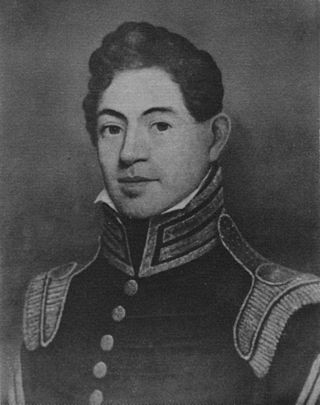
Benjamin Kendrick Pierce was a career officer in the United States Army. He was a son of New Hampshire Governor Benjamin Pierce and brother of President Franklin Pierce. Benjamin K. Pierce was a veteran of the War of 1812, the Second Seminole War, and the Mexican–American War, and rose to the rank of lieutenant colonel in the Army and colonel in the Florida Militia.

The 122nd Regiment Illinois Volunteer Infantry was an Infantry Regiment that served in the Union Army during the American Civil War.
Warren's Cave is a dry karst cave in Alachua County, Florida. It is the longest dry cave in Florida, with more than 4 miles (6.4 km) of mapped passages. The cave is located on the margin of the Cody Scarp near the San Felasco Hammock Preserve State Park, northwest of the city of Gainesville. The property on which the entrance to Warren's Cave is located, the Warren Cave Nature Preserve, is owned by the National Speleological Society. Warren's cave was probably formed by a high water table when sea levels in the Quaternary Period were elevated close to 100 feet (30 m) above current sea level, corresponding to the Wicomico terrace.
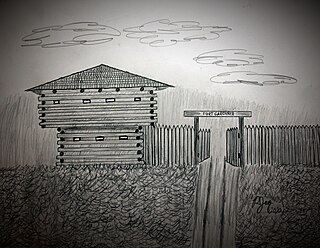
Fort Gardiner was a stockaded fortification with two blockhouses that was built in 1837 by the United States Army. It was one of the military outposts created during the Second Seminole War to assist Colonel Zachary Taylor's troops to capture Seminole Indians and their allies in the central part of the Florida Territory that were resisting forced removal to federal territory west of the Mississippi River per the Indian Removal Act.

Fort Basinger's original site is located approximately 35 miles (56 km) west of Fort Pierce, Florida, along U. S. Highway 98 in Highlands County, Florida. It was a stockaded fortification with two blockhouses that was built in 1837 by the United States Army. It was one of the military outposts created during the Second Seminole War to assist Colonel Zachary Taylor's troops to confront and capture Seminole Indians and their allies in the central part of the Florida Territory in the Lake Okeechobee region. The Seminole Indians and their allies were resisting forced removal to federal territory west of the Mississippi River as directed by the Indian Removal Act.















